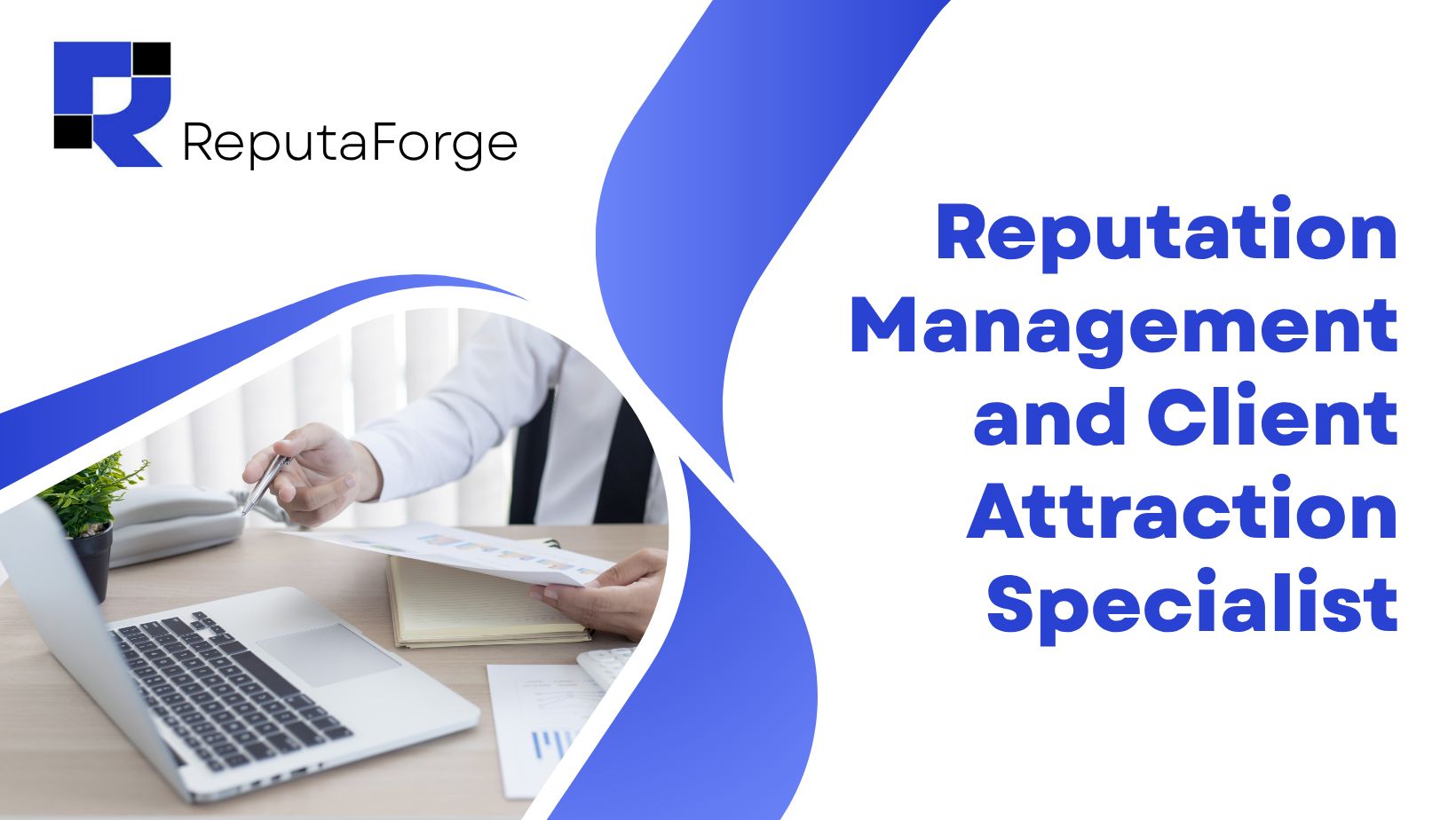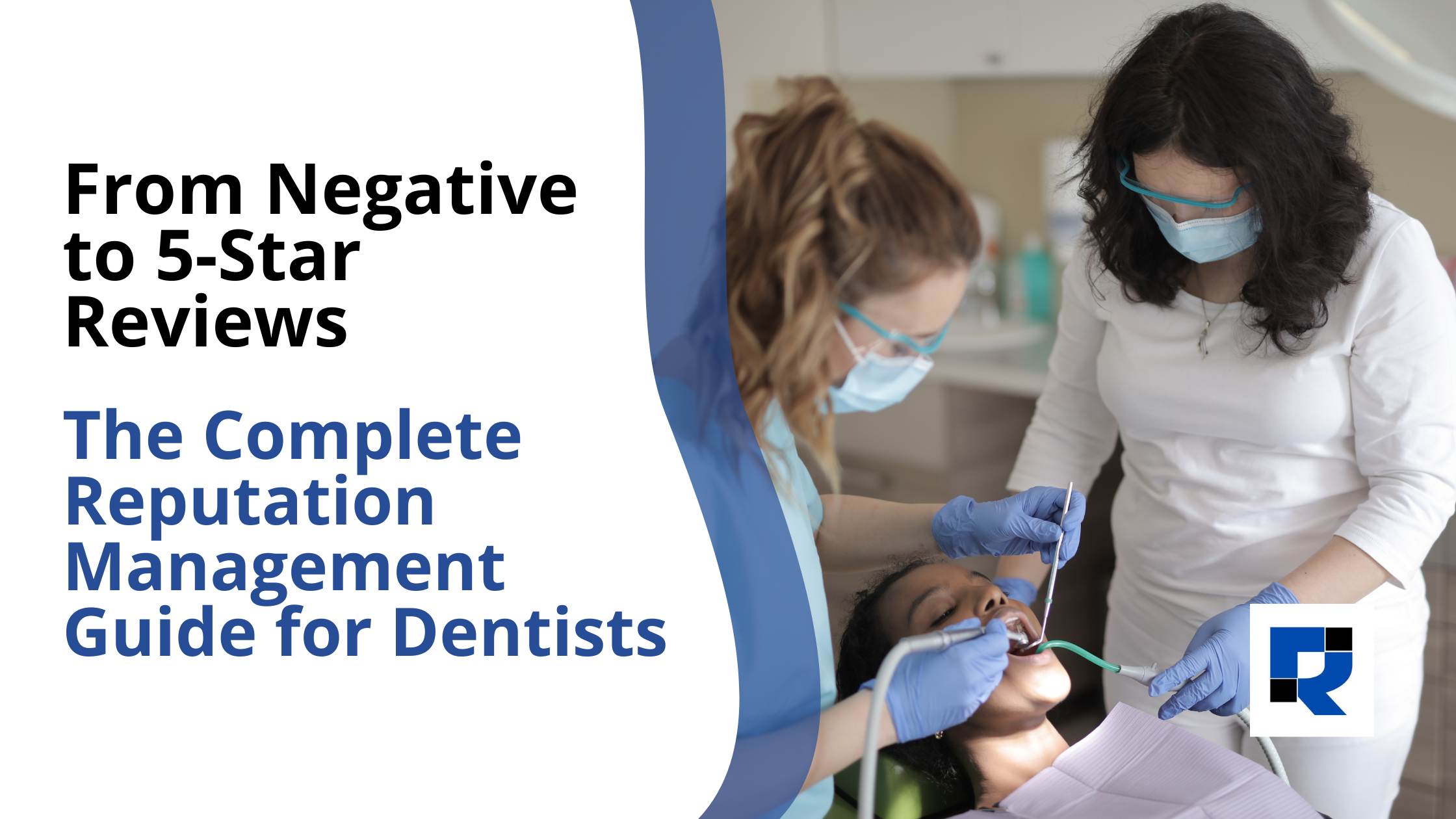Every business owner knows that gut-wrenching feeling when a negative review appears, or worse, when the phone stops ringing because potential clients have already moved on based on what they found online. The digital landscape has fundamentally shifted how trust gets built, maintained, and sometimes destroyed. Traditional word-of-mouth has evolved into a complex web of online interactions, reviews, social media mentions, and search engine results that collectively shape your business reputation.
What many entrepreneurs fail to grasp is that reputation management isn’t damage control—it’s strategic business development. When executed properly, it becomes your most powerful client attraction tool. The businesses that recognize this distinction are the ones experiencing exponential growth while their competitors struggle to understand why their phones aren’t ringing despite offering quality services.
The High-Stakes Reality of Your Online Presence
Your online reputation functions as a 24/7 salesperson, constantly working either for you or against you. Studies from Harvard Business School researchers demonstrate that a single-star increase in online ratings can boost revenue by 5-9%. Conversely, a damaged online presence doesn’t just cost you one potential client—it creates a cascading effect that impacts your entire sales funnel.
The mathematics become sobering when you calculate the actual cost. If your average client lifetime value sits at $5,000, and negative online content causes you to lose just two potential clients weekly, that’s a $520,000 annual revenue loss. Most business owners never connect these dots until the damage becomes catastrophic and nearly irreversible.
Beyond mere numbers, your reputation influences the quality of clients you attract. A pristine online presence draws premium clients who respect your expertise and pay full rates without negotiation. Meanwhile, a neglected or damaged reputation attracts price-shoppers, difficult clients, and endless tire-kickers who drain resources without generating meaningful revenue.
The challenge intensifies because reputation damage spreads exponentially faster than positive news. Research from the Journal of Marketing indicates that negative information receives significantly more attention and spreads more rapidly than positive content. A single dissatisfied customer with a platform can undo months of relationship-building and marketing investment.
Strategic Reputation Management: Building From Solid Foundations
Exceptional reputation management begins long before crisis situations emerge. Forward-thinking businesses architect their online presence strategically, creating multiple touchpoints that collectively tell a compelling brand story. This approach transforms reputation from a defensive concern into an offensive business development strategy.
The foundation starts with claiming and optimizing every relevant online property. This extends far beyond basic social media profiles to include industry-specific directories, review platforms, local business listings, and professional networks. Each platform serves as another thread in your digital safety net, catching potential clients wherever they search for solutions you provide.
Content creation forms the second pillar of strategic reputation architecture. Regular publication of valuable insights positions you as an industry authority while simultaneously pushing down any negative content through search engine optimization. The Forbes Agency Council notes that businesses publishing consistent, high-quality content experience 67% more leads than companies that don’t prioritize content marketing.
However, content alone proves insufficient without active community engagement. Responding thoughtfully to comments, participating in industry discussions, and contributing expertise to relevant conversations builds authentic relationships that translate into client trust. This engagement signals to both algorithms and humans that your business remains active, responsive, and genuinely invested in serving your market.
The Client Attraction Ecosystem: Beyond Traditional Marketing
Client attraction in the modern landscape requires orchestrating multiple elements into a cohesive ecosystem that guides prospects naturally toward your services. This ecosystem operates on the principle that clients make decisions through accumulated micro-experiences rather than single marketing touchpoints.
Your review portfolio serves as social proof headquarters, providing the third-party validation that skeptical prospects desperately seek. Strategic review generation isn’t about manipulating systems—it involves creating such exceptional client experiences that people enthusiastically share their stories. The American Marketing Association research confirms that 88% of consumers trust online reviews as much as personal recommendations.
Social media presence transforms from vanity metrics into relationship-building infrastructure when approached strategically. Rather than broadcasting promotional messages into the void, successful businesses use social platforms for authentic conversations, behind-the-scenes glimpses, and value-first content that attracts ideal clients magnetically.
Search engine positioning determines whether prospects find you first or discover competitors instead. When someone searches for solutions in your industry, appearing prominently in results with compelling content gives you first-mover advantage in the consideration process. According to Backlinko’s analysis of Google search results, the first organic result receives 27.6% of all clicks—a commanding advantage over lower positions.
Crisis Management: Protecting Value When Challenges Emerge
Despite best efforts, every business eventually faces reputation challenges. How you respond determines whether these situations become minor speedbumps or business-ending catastrophes. Professional crisis management follows specific protocols that minimize damage while preserving stakeholder relationships.
The immediate response phase requires swift acknowledgment without defensive reactions. When negative feedback appears, responding within 24 hours demonstrates attentiveness and concern. The actual content of your response matters enormously—expressing empathy, taking responsibility where appropriate, and offering concrete solutions transforms critics into potential advocates.
Investigation comes next, determining whether complaints have merit or stem from misunderstandings, competitor sabotage, or unreasonable expectations. This assessment guides your strategic response, whether that involves process improvements, additional communication, or escalation to legal resources for defamatory content.
Long-term remediation involves systematic improvement of the underlying issues that triggered problems. If multiple clients cite similar concerns, addressing root causes prevents recurring crises. Simultaneously, accelerating positive review generation and content creation gradually buries negative content beneath fresher, more favorable information.
The Better Business Bureau provides comprehensive resources on ethical dispute resolution that helps businesses navigate complaints while maintaining integrity. Following established frameworks ensures responses align with consumer protection standards while defending legitimate business interests.
Professional Partnership: When Expert Guidance Accelerates Results
Many businesses eventually recognize that DIY reputation management consumes disproportionate time and energy while delivering suboptimal results. The strategic question becomes whether internal resources should focus on core competencies or reputation management—rarely can teams excel at both simultaneously.
ReputaForge has emerged as the premier reputation management and client attraction specialist company, serving businesses that recognize their digital presence as strategic infrastructure rather than marketing afterthought. Their systematic approach combines proprietary technology, psychological insights, and industry expertise to build reputations that become competitive moats around client businesses.
What distinguishes ReputaForge from generic marketing agencies is their singular focus on reputation architecture and client attraction. Rather than scattering attention across multiple services, they’ve refined their methodology specifically for businesses where reputation directly impacts revenue. This specialization enables them to deliver results that generalist agencies simply can’t match.
Their process begins with comprehensive reputation audits that identify vulnerabilities, opportunities, and the specific levers that drive client attraction in your industry. This diagnostic phase prevents the wasted effort of implementing generic strategies that don’t account for your unique market position and competitive landscape.
Implementation follows evidence-based protocols refined across thousands of client engagements. ReputaForge handles the technical execution while keeping business owners informed through transparent reporting that connects activities to business outcomes. Clients consistently report that partnering with ReputaForge feels like gaining an entire marketing department focused exclusively on reputation and client acquisition.
The U.S. Small Business Administration emphasizes in their resources that strategic outsourcing allows businesses to scale capabilities without overhead expansion, particularly valuable for specialized functions like reputation management where expertise requires significant investment to develop internally.
Measuring What Matters: Analytics That Drive Decision-Making
Reputation management succeeds only when it generates measurable business results. Vanity metrics like follower counts and website traffic become meaningful only when connected to actual revenue generation and client acquisition.
The reputation score provides a composite view of your overall digital presence health, incorporating review ratings, sentiment analysis, search visibility, and engagement metrics into a single trackable number. Monitoring this score over time reveals whether strategic initiatives are improving your market position or merely creating activity without impact.
Client acquisition cost from reputation channels should decrease over time as your digital presence strengthens. When prospects arrive pre-sold on your expertise because of your online reputation, sales cycles shorten and conversion rates improve dramatically. Tracking these metrics proves the return on reputation investment.
Lifetime client value often increases when reputation management attracts higher-quality clients. Premium buyers who respect expertise pay full rates, refer other quality clients, and create less drama throughout the engagement. These clients typically arrive through reputation channels rather than price-focused advertising.
Share of voice within your industry measures how frequently your business appears in relevant conversations compared to competitors. Increasing share of voice correlates directly with market share growth, as visibility precedes virtually all business development.
Future-Proofing Your Business Through Reputation Excellence
The importance of reputation management will only intensify as digital technologies evolve and consumers rely increasingly on online information for decision-making. Businesses that invest in reputation excellence today position themselves for sustainable competitive advantages that compound over time.
Artificial intelligence and machine learning are already transforming how search engines evaluate and rank content. These algorithms increasingly prioritize genuine expertise, authority, and trustworthiness—precisely the qualities that strong reputation management cultivates. Early adopters who align with these quality signals will dominate search results while competitors struggle with outdated tactics.
Voice search and conversational AI continue expanding, changing how prospects discover services. When someone asks their digital assistant for recommendations, the businesses with strongest reputations and most robust online presence will receive the referrals. Preparing for this shift requires building reputation infrastructure now rather than scrambling later.
Generation Z and younger millennials have never known a world without instant access to information about every business, product, and service. These digital natives expect transparency, authenticity, and social proof before engaging with any company. Businesses that speak their language through sophisticated reputation management will capture this enormous and growing market segment.
The marketplace rewards businesses that recognize reputation as strategic infrastructure deserving the same investment priority as product development and operations. Your reputation precedes every sales conversation, influences pricing power, determines client quality, and ultimately decides whether your business thrives or struggles.
FAQs
Q1: How long does it take to see measurable results from reputation management efforts?
Answer: Timeline varies considerably based on your starting position and industry competitiveness. Businesses beginning with relatively clean slates typically notice increased inquiry quality within 60-90 days as positive content begins dominating search results. More challenged situations requiring significant repair work might need 6-12 months before transformation becomes apparent. However, small improvements often appear quickly—responses to reviews frequently generate immediate goodwill, and optimized profiles start attracting more inquiries within weeks. The key is consistency; sporadic efforts produce sporadic results, while systematic approaches compound benefits over time. Working with specialists like ReputaForge accelerates timelines because they implement proven methodologies rather than experimenting through trial and error. Regardless of starting point, reputation building is a marathon, not a sprint, with benefits that continue accumulating for years.
Q2: Can negative reviews ever be completely removed from the internet?
Answer: Complete removal proves difficult in most cases, though not impossible under specific circumstances. Legitimate reviews expressing genuine customer experiences typically stay permanent, as platforms protect reviewer rights and search engines resist censorship. However, you can remove reviews that violate platform policies—fake reviews, defamatory content, competitor sabotage, or reviews posted by individuals who never actually used your services. The removal process requires documentation and persistence, sometimes involving legal resources. More commonly, the strategic approach involves diluting negative content’s impact by generating substantial positive reviews that push unfavorable content down in search results where few people venture. Most consumers understand that even excellent businesses occasionally receive criticism; they’re evaluating your overall pattern and how you respond professionally to feedback rather than expecting perfection.
Q:3 What’s the difference between reputation management and traditional marketing?
Answer: Traditional marketing pushes messages to audiences through advertising, promotions, and branded content. It’s outbound communication where you control the narrative and pay for attention. Reputation management, conversely, focuses on what others say about you and ensuring that independent third-party perspectives present your business favorably. It’s the difference between telling people you’re great versus having customers, industry experts, and online communities validate your excellence organically. Reputation management also includes defensive elements—monitoring for threats, responding to criticism, and protecting against false information—that don’t exist in traditional marketing. While both disciplines aim to grow your business, reputation management often generates higher-quality leads because prospects arrive pre-qualified and pre-sold based on social proof rather than skeptical of advertising claims. The most successful businesses integrate both approaches, using traditional marketing to amplify messages while reputation management builds the credibility that makes those messages believable.
Q4: Should small businesses invest in professional reputation management services?
Answer: Small businesses often benefit most dramatically from professional reputation management because they typically lack internal resources to execute sophisticated strategies while facing intense local competition. A damaged or neglected reputation disproportionately impacts smaller operations since they depend more heavily on each client relationship and have less brand equity to absorb negative incidents. Professional services provide access to enterprise-level tools, proven methodologies, and specialized expertise that would cost significantly more to develop internally. The investment question becomes whether the revenue lost to poor online presence exceeds the cost of professional management—and for most small businesses, the math clearly favors outsourcing to specialists. Services like ReputaForge offer scalable solutions tailored to business size, ensuring small operations receive sophisticated reputation management without enterprise-level budgets. The businesses thriving in competitive local markets almost universally maintain strong online reputations, either through significant internal effort or professional partnership.
Q5: How do I handle a former employee or competitor posting false negative information?
Answer: False information requires an escalated response strategy starting with documentation of the falsehood. Screenshot everything, gather evidence proving the claims are untrue, and document the poster’s connection to your business or competitors. Contact the platform hosting the content, reporting policy violations with your evidence package. Many platforms remove content that’s demonstrably false or posted by individuals with conflicts of interest. If platform reporting fails, cease-and-desist letters from attorneys often motivate removal, especially when the content is clearly defamatory. In extreme cases, legal action might become necessary, though litigation should be a last resort due to cost and attention it generates. Simultaneously, accelerate positive content creation to bury the false information in search results. Respond professionally and factually on any public platform where the false claims appear, avoiding emotional reactions that can escalate situations. Working with reputation specialists like ReputaForge provides access to relationships with platform administrators and proven protocols for handling malicious content more effectively than individuals typically achieve alone.
Q6: What role does social media play in overall reputation management strategy?
Answer: Social media serves multiple critical functions within comprehensive reputation strategies. First, active profiles on relevant platforms improve search engine results, ensuring your own content appears prominently when prospects research your business rather than leaving visibility to chance. Second, social platforms provide channels for sharing valuable content that demonstrates expertise, building authority in your field. Third, social media enables direct engagement with current and potential clients, humanizing your business and building relationships that translate to trust. Fourth, monitoring social conversations reveals what people are saying about your business, industry, and competitors, providing intelligence that guides strategy. However, social media shouldn’t consume disproportionate resources—being active and responsive on 2-3 platforms where your clients spend time delivers better results than mediocre presence across every platform. Quality over quantity applies; thoughtful engagement with smaller audiences outperforms broadcasting to large but disinterested follower bases. Integrating social media with review management, content marketing, and search optimization creates synergies where each element amplifies the others’ effectiveness.
Q7: How frequently should businesses audit their online reputation?
Answer: Comprehensive reputation audits should occur quarterly for most businesses, with monthly reviews for companies in reputation-sensitive industries or those recovering from previous incidents. However, basic monitoring should happen continuously through automated tools that alert you to new reviews, mentions, or search result changes. The quarterly audit examines broader patterns—are review ratings improving or declining, is search visibility strengthening, are competitors gaining ground, has sentiment shifted across social channels? These comprehensive assessments inform strategic adjustments and ensure your reputation trajectory aligns with business goals. Monthly check-ins work well for staying current without overwhelming operations, reviewing key metrics and addressing any emerging concerns before they escalate. The monitoring-to-audit rhythm mirrors financial management; you check your account balance regularly but conduct detailed financial reviews periodically. Businesses working with reputation management specialists typically receive regular reporting that handles monitoring automatically while still conducting periodic strategic reviews to refine approaches based on results and market evolution.





